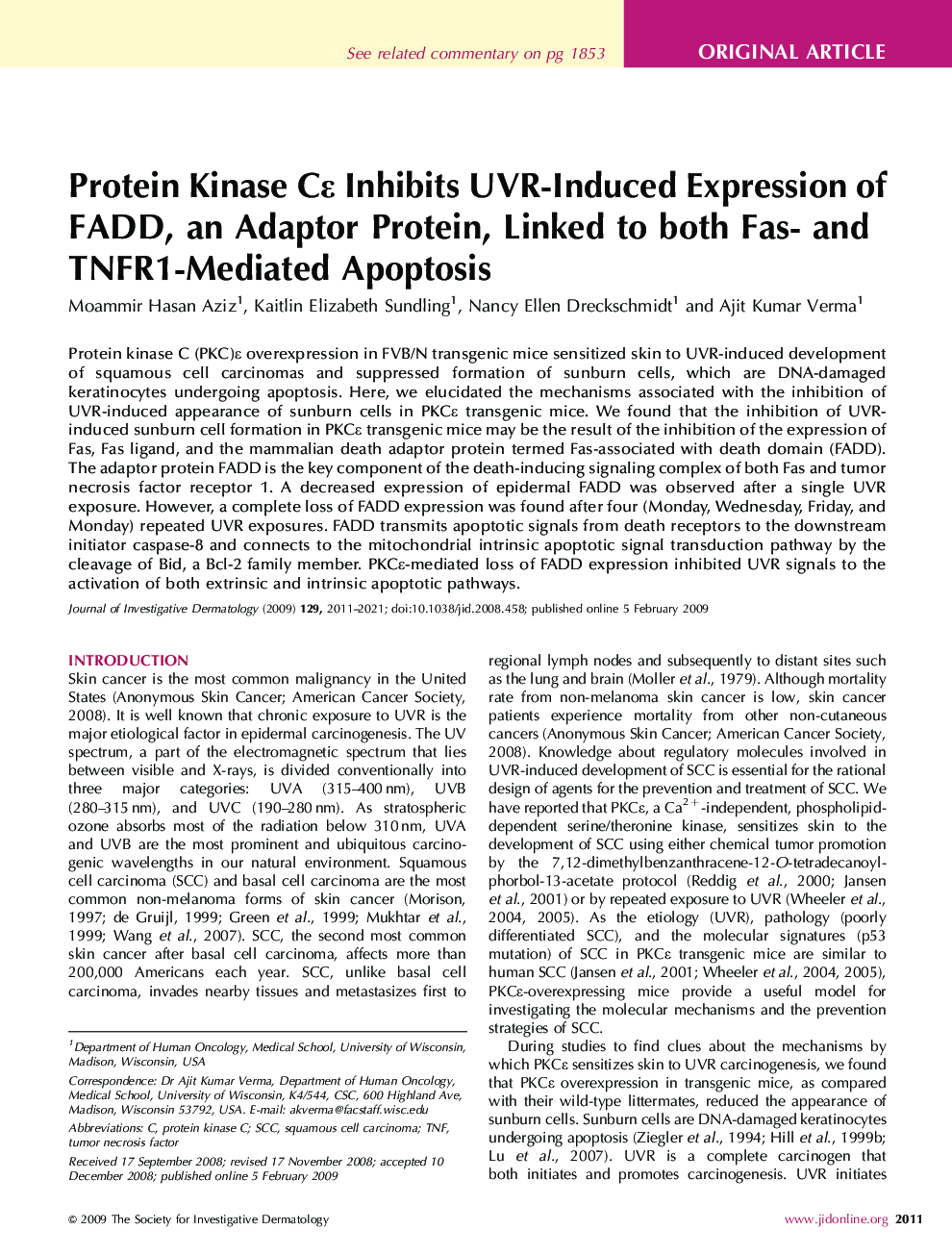| Article ID | Journal | Published Year | Pages | File Type |
|---|---|---|---|---|
| 3216842 | Journal of Investigative Dermatology | 2011 | 11 Pages |
Abstract
Protein kinase C (PKC)ε overexpression in FVB/N transgenic mice sensitized skin to UVR-induced development of squamous cell carcinomas and suppressed formation of sunburn cells, which are DNA-damaged keratinocytes undergoing apoptosis. Here, we elucidated the mechanisms associated with the inhibition of UVR-induced appearance of sunburn cells in PKCε transgenic mice. We found that the inhibition of UVR-induced sunburn cell formation in PKCε transgenic mice may be the result of the inhibition of the expression of Fas, Fas ligand, and the mammalian death adaptor protein termed Fas-associated with death domain (FADD). The adaptor protein FADD is the key component of the death-inducing signaling complex of both Fas and tumor necrosis factor receptor 1. A decreased expression of epidermal FADD was observed after a single UVR exposure. However, a complete loss of FADD expression was found after four (Monday, Wednesday, Friday, and Monday) repeated UVR exposures. FADD transmits apoptotic signals from death receptors to the downstream initiator caspase-8 and connects to the mitochondrial intrinsic apoptotic signal transduction pathway by the cleavage of Bid, a Bcl-2 family member. PKCε-mediated loss of FADD expression inhibited UVR signals to the activation of both extrinsic and intrinsic apoptotic pathways.
Related Topics
Health Sciences
Medicine and Dentistry
Dermatology
Authors
Moammir Hasan Aziz, Kaitlin Elizabeth Sundling, Nancy Ellen Dreckschmidt, Ajit Kumar Verma,
